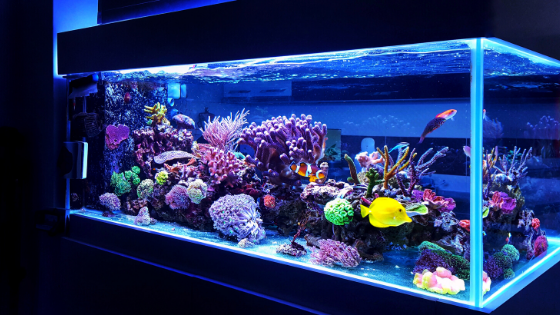Take It Slow When Caring for Aquarium Snails
- Posted on

Aquarium snails are the cutest addition to any tank. They're hard working filter feeders that keep aquatic environments sparkling clean and, unlike the popular plecostomus, snails won't outgrow their habitat any time soon. Mystery Snails are among the most popular varieties and come in a range of fun colors from solid browns to oranges, yellows, and striped gradient shell patterns.
With a little love and care, aquarium snails are sure to add style to your tank!
Aquarium snails are the cutest addition to any tank. They're hard working filter feeders that keep aquatic environments sparkling clean and, unlike the popular plecostomus, snails won't outgrow their habitat any time soon. Mystery Snails are among the most popular varieties and come in a range of fun colors from solid browns to oranges, yellows, and striped gradient shell patterns.
With a little love and care, aquarium snails are sure to add style to your tank!
Watch the Water
The number one rule when it comes to caring for freshwater snails is keeping a vigilant eye on water conditions. Sudden shifts in temperature and pH stress snails out, leading to poor health and decline.
Ideally, aquarium snails prefer a pH level between 7.0 to 7.5. Properly circulating water is a must when it comes to providing an oxygen rich environment. If your tank does not have a high quality filter already, invest in one prior to adding snails. Temperatures should be kept between 68 to 82 degrees Fahrenheit. Snails thrive under most lighting conditions.
Vitamins and Nutrients
Although snails are relatively hardy creatures, there are a few environmental factors to consider. Snails prefer hard, calcium dense water for optimal shell maintenance and growth. If your snail's shell is looking cracked or thin, this is a good indication that it's time to add some calcium supplements and test your pH level to ensure appropriate conditions.
Nitrite levels are another factor you'll need to take into account. A build up of nitrite from plant fertilizers, tank medications, and treatments can be harmful to snails. Always maintain a level of 0 ppm and avoid copper containing additives as well.
Feeding, Friends, and More
Snails coexist peacefully with most aquatic families. However, there are a few species to avoid if you want to keep your filter feeders from becoming food themselves. Clown loaches, skunk loaches, dorid catfish, banjo catfish, puffers, bettas, goldfish, angelfish and barbs all prefer snails as a tasty snack. Opt for fish like danios, White Cloud minnows, neon tetras and guppies instead.
In a sustainable aquarium, snails derive the majority of nutrients from algae build up and waste. However, if you have a smaller tank or food is lacking, you can provide algae wafers for supplemental feeding. Offer wafers in the evening when snails are most active.
When you need a little extra help figuring out your tank's specific needs, contact our experts.
